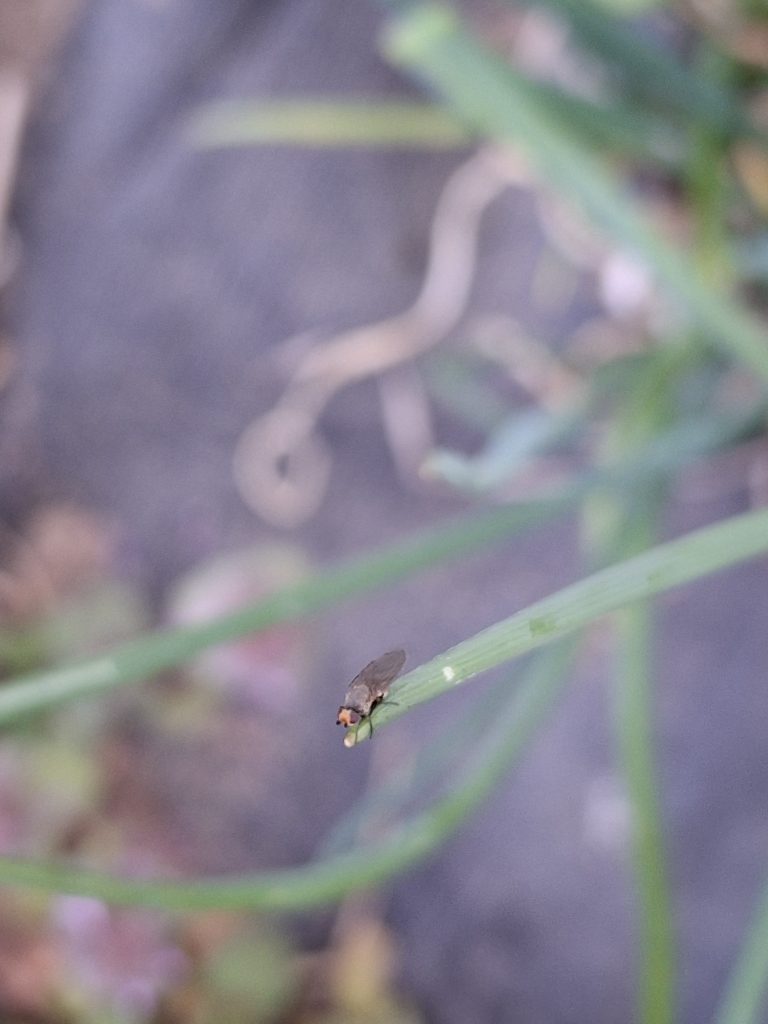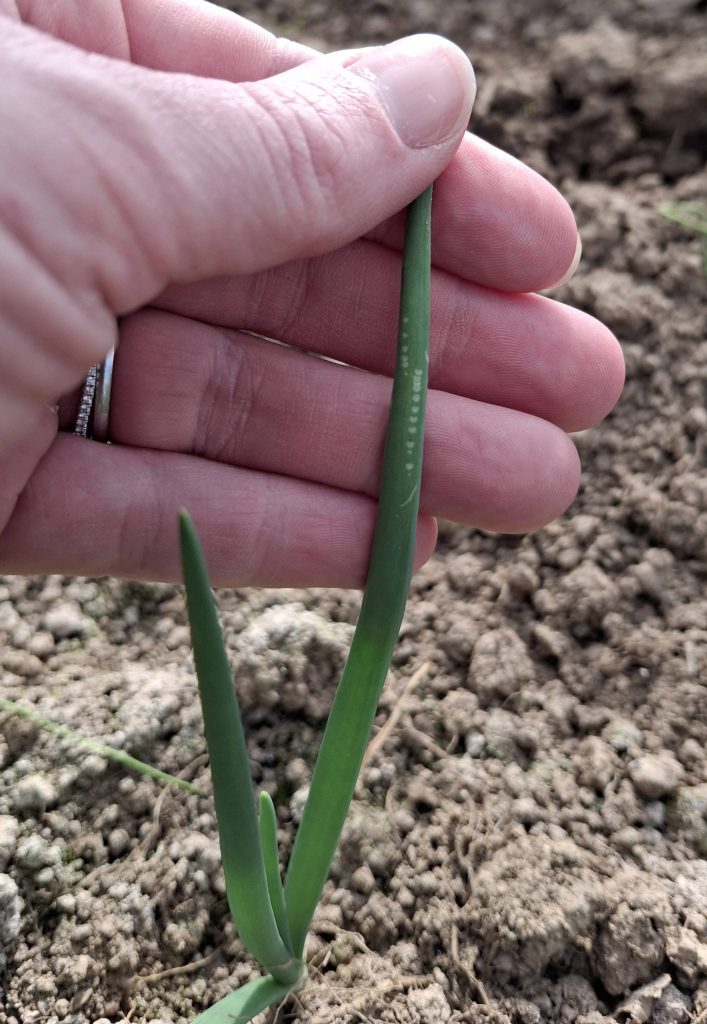By: Grace Stern, Kemper Sutton, and Tom Kuhar
Allium Leafminer (ALM) (Phytomyza gymnostoma), first detected in the U.S. in 2015, has spread through the Northeast, affecting onions, garlic, leeks, chives, and shallots. Detections have been made in VA over the past few years. To date the pest has been detected in the following localities: Frederick, Montgomery, Carroll, Nelson, Northampton, Botetourt, and Bedford counties, plus the City of Lynchburg. If you see oviposition injury, please report it through this form so we can make an accurate map of the pest distribution in VA.

Growers should inspect crops for neat rows of small white spots on leaves, indicating feeding and oviposition. Initial infestations often occur on the tips of leaves, with adults visible near leaf tips in cooler conditions. To manage ALM, use floating row covers and apply insecticides as needed. Entrust, works well for organic growers. An integrated pest management (IPM) plan, including monitoring and timely intervention, is essential to reduce ALM’s impact and ensure a successful harvest. For more information, contact your local extension office or visit relevant resources.

More information on ALM in VA : Allium Leafminer in VA
Questions about this pest? Email allium@vt.edu
Insecticides labeled for ALM:
Mustang Maxx 2.88 to 4.0 fl oz/A zeta-cypermethrin
Warrior 1.28 to 1.92 fl oz/A lambda-cyhalothrin
Scorpion 35SL 8.75 to 10.5 fl oz/A dinotefuran – soil
Scorpion 35SL 5.25 to 7.0 fl oz/A dinotefuran – foliar
Venom 70SG 5.0 to 6.0 fl oz/A dinotefuran – soil
Venom 70SG 3.0 to 4.0 fl oz/A dinotefuran – foliar
Entrust SC (OMRI) 3.0 to 6.0 fl oz/A spinosad
Radiant SC 6.0 to 10.0 fl oz/A spinetoram
Trigard 75WSP 2.66 oz/A cyromazine
Exirel 13.5 to 20.5 fl oz/A cyantraniliprole
Minecto Pro 7.0 to 10.0 fl oz/A cyantraniliprole + abamectin
